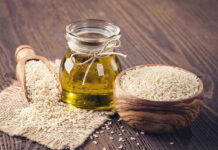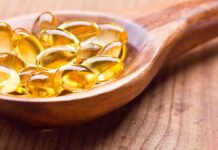
One wrong tilt of the head at your favorite hair salon could—without warning—trigger symptoms mimicking a stroke, thanks to a rare and little-known medical phenomenon hiding in plain sight.
Story Overview
- Beauty Parlor Stroke Syndrome (BPSS) is a documented but extremely rare condition caused by neck hyperextension during salon hair-washing.
- Most reported cases occur in women, with symptoms ranging from dizziness to paralysis, sometimes appearing hours after a salon visit.
- BPSS’s risk factors include hypertension, diabetes, cardiovascular issues, and cervical spine arthritis, making awareness crucial for certain groups.
- Despite its rarity, BPSS has prompted changes in salon equipment design, professional training, and public health discussions.
Neck Positioning at Salons: The Hidden Stroke Risk
Beauty Parlor Stroke Syndrome does not announce itself with drama. A client reclines in a salon chair, head tipped back over the unforgiving rim of a shampoo basin, water rushing over their scalp. For most, this ritual is nothing more than a relaxing interlude. But for a small, unlucky minority, the extreme backward tilt can compress the vertebral arteries—the blood vessels that supply the brain’s posterior circulation. If these arteries are compromised, even briefly, a cascade of events may unfold: arterial tearing, blood clot formation, and, in rare cases, a stroke.
Vertebral artery dissection, the underlying mechanism of BPSS, was first documented in 1993 by neurologist Michael Weintraub. His research linked five patients’ sudden stroke-like symptoms directly to salon shampoo sessions. Since then, the medical literature has slowly accumulated more evidence, with a recent review cataloguing 54 cases over nearly five decades. The risks spike for those with pre-existing conditions—hypertension, diabetes, cardiovascular disease, or cervical spine arthritis—where even minor trauma can trigger major consequences.
Medical Science Unpacks the Syndrome
Biomechanical studies reveal that the neck’s extreme extension during shampooing can stretch or compress the vertebral arteries, sometimes pinning them against bone spurs from spinal arthritis. This mechanical stress may cause a tear in the artery wall, known as a dissection, which can then produce a clot that obstructs blood flow to the brain. The symptoms—headache, dizziness, nausea, blurred vision, and sometimes unilateral paralysis—may appear during the salon visit or, confoundingly, hours to days later. Such delays make diagnosis difficult, often leaving patients and doctors scrambling for answers.
BPSS is not confined to beauty salons. Dental procedures, whiplash injuries, and even extreme sports like bungee jumping or skiing can generate the same neck hyperextension, according to Professor Pippa Tyrrell, a stroke medicine expert at the University of Manchester. Yet salons account for the majority of documented cases, perhaps due to the sustained, unnatural positioning required for classic shampooing. The syndrome’s impact is not age-specific: teenagers to seniors have been affected, but women over 50 with underlying health issues remain at highest risk.
Industry Response: Prevention, Protocols, and Uncertainty
As awareness of BPSS grows, so does the response from the beauty industry. Salon owners and stylists have begun to rethink equipment choices, favoring ergonomic basins and supportive neck cushions to minimize hyperextension. Cosmetology schools incorporate BPSS awareness into training, and insurance providers are quietly updating liability policies to reflect the syndrome’s risk profile. The challenge remains: how much precaution is too much for a condition so rare it barely registers in national health statistics?
Medical professionals, meanwhile, urge a balanced approach. The syndrome’s rarity should not be cause for panic, but vigilance is warranted, especially for high-risk clients. Prompt recognition of symptoms and swift medical intervention can make the difference between full recovery and lasting neurological damage. Some experts argue that improved diagnostic awareness among healthcare providers could reduce misdiagnosis and improve outcomes for those few who do develop BPSS after a salon visit.
Implications for Public Health and Everyday Life
BPSS illustrates a broader tension in modern health: how to balance general safety measures against statistically remote risks. Millions visit salons annually without incident, yet the documented cases—painstakingly assembled from medical journals, news reports, and hospital records—force a reckoning with the unexpected. The syndrome’s notoriety is amplified by its unpredictability and the contrast between a mundane activity and its dramatic consequences.
The ripple effects extend beyond salons. Equipment manufacturers sense opportunity in ergonomic innovations, while regulatory bodies consider updated guidelines for safe shampooing. For clients, informed consent may soon include not just chemical exposure or infection control, but also the faint possibility of vascular injury. As the medical literature continues to expand, so too does the conversation about risk, responsibility, and the hidden dangers in everyday routines.















